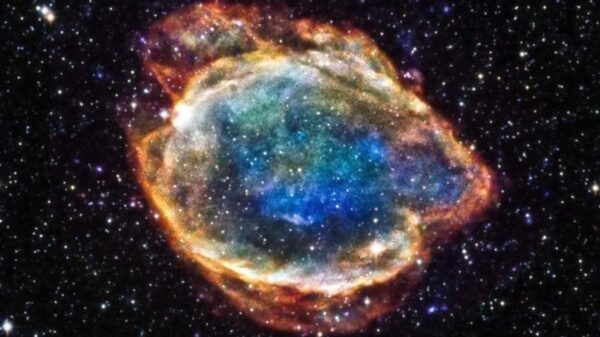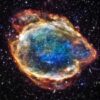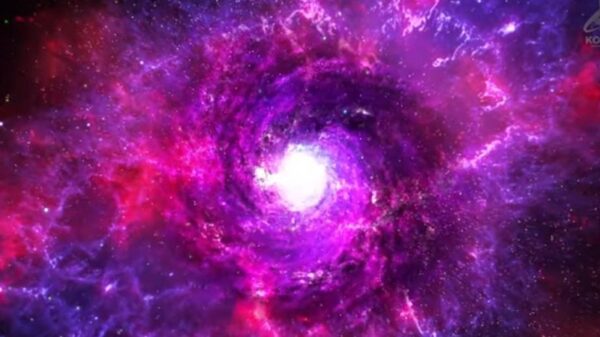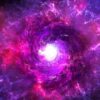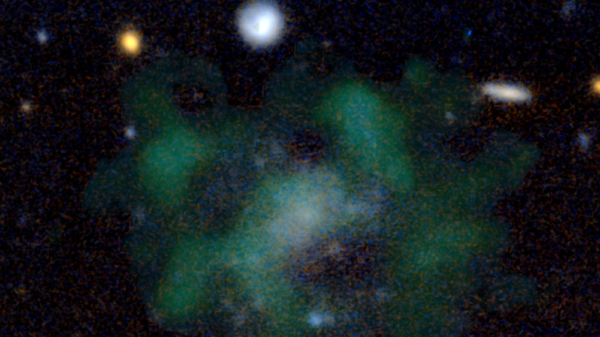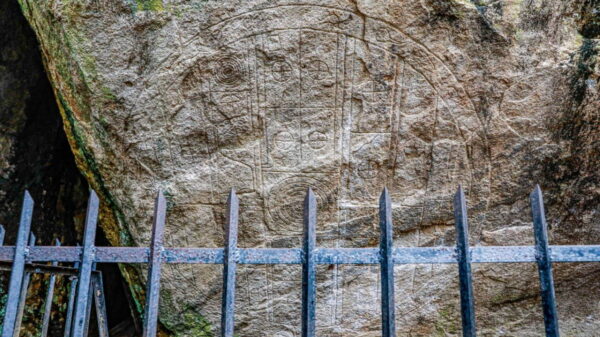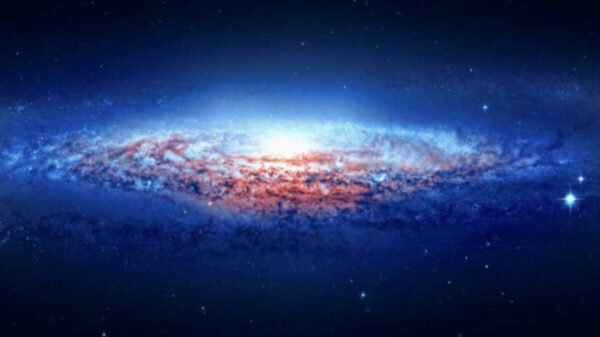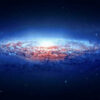Mounted on the Nicholas U. Mayall 4-meter telescope at the U.S. National Trust’s Kitt Peak National Observatory in Arizona, there is a scientific instrument that is doing one of the most important studies ever conducted. It’s DESI, which stands for Dark Energy Spectroscopic Instrument, and it’s conducting a five-year study to create the largest 3D map of the universe ever obtained.
DESI, the result of an international scientific collaboration of more than 900 researchers from more than 70 institutions around the world, is managed by the U.S. Department of Energy’s Lawrence Berkeley National Laboratory (LBNL). Since it began exploring the sky in 2021, the instrument has observed 5,000 galaxies every 20 minutes, for a total of more than 100,000 galaxies per night.
Astronomers are now conducting an initial analysis of the data obtained during the first year of observation. Using spectra from nearby galaxies and distant quasars, the researchers were able to measure the expansion history of the universe with a maximum accuracy of more than one percent.
The results confirm the foundations of the standard cosmological model of the universe and provide unprecedented insights into the nature of dark energy and its impact on the large-scale structure of the universe.

Mapping the Universe, Galaxy by Galaxy
To map the cosmos, DESI collects light from millions of galaxies in more than a third of the entire sky. By breaking down the light from each galaxy on the color spectrum, DESI can determine how much light has been displaced by the expansion of the universe in the billions of years it traveled before reaching Earth. As a general rule, the greater the redshift, the farther away the galaxy is.
Equipped with 5,000 tiny “peephole” robots, DESI is capable of performing these measurements at unprecedented speed. In its first year alone, DESI surpassed all previous studies of its type in quantity and quality.
The incredibly deep and precise data collected by DESI in the first year allowed astronomers to measure the expansion rate of the universe up to 11 billion years ago, when the cosmos was only a quarter of its current age, using a feature of the large-scale structure of the universe called baryon acoustic oscillations (BAO).
Exploring Space History with BAO
BAO is a residual imprint of the pressure waves that permeated the early universe when it was nothing more than a hot, dense soup of subatomic particles. As the universe expanded and cooled, the waves froze, freezing the ripples and spawning the seeds of future galaxies in the densest regions.
This pattern can be seen in the detailed DESI map, which shows filaments of galaxies grouped together and separated by gaps where there are fewer objects.

At a certain distance, BAOs become too faint to be detected by ordinary galaxies. So astronomers look at what is illuminated by the extremely distant and bright known galactic nuclei called quasars. As light from quasars travels through space, it is absorbed by intergalactic clouds of gas, allowing astronomers to map pockets of dense matter. To implement this technique, the researchers used 450,000 quasars, the largest set ever assembled for this kind of study.
Thanks to DESI’s unique ability to map millions of nearby galaxies and distant quasars, astronomers can measure the propagation of ripples at different periods in cosmic history to see how dark energy has changed scale as it expands.
Detailing Space History
Although the history of the expansion of the universe may be more complex than previously thought, confirmation of this will have to wait until the completion of the DESI project. By the end of the five-year study, DESI plans to map more than 3 million quasars and 37 million galaxies. As new data becomes available, astronomers will refine their results.
“This project solves some of the biggest questions in astronomy, such as the nature of the mysterious dark energy that drives the expansion of the universe,” says Chris Davis, director of the NOIRLab program at NSF.
And while DESI continues to impress with its performance, scientists already know that its data will work in harmony with future sky surveys conducted by the Vera K. Rubin Observatory and the Nancy Grace Roman Space Observatory.
Currently, the DESI collaboration is exploring the possibilities of upgrading the instrument and plans to expand its cosmological studies in the second phase, DESI-II.





